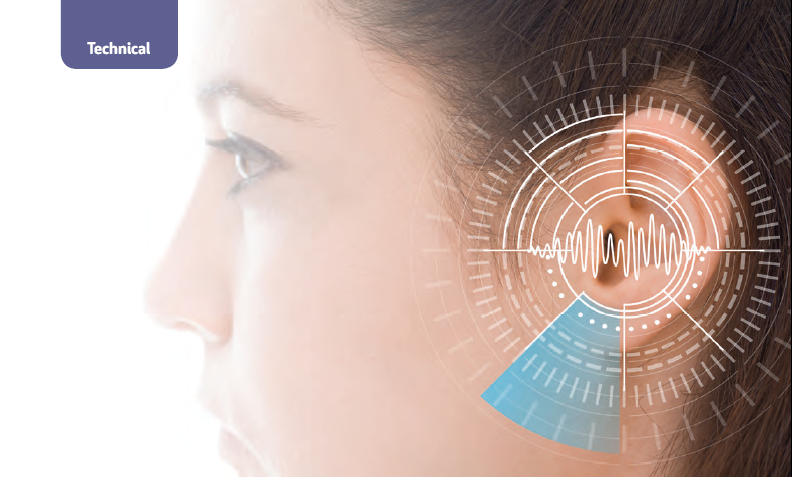New verification scheme launch will allay industry concerns and provide benchmark for the future.
With the acoustic performance of products so important and in a bid to curb growing incidents of ‘passing off’, a new Acoustic Verification Scheme has been created by FIS in response to confusion and concerns related to the comparability of acoustic airborne sound insulation tests claims. This will allow designers, architects and contractors to specify products, safe in the knowledge they will provide the acoustics performance claimed, eliminating any misinformation and misleading information.
It is a subject that is rising to the top of the design agenda, but there is now a far greater understanding of the impact of good acoustics on a commercial space. Therefore, when sound is overlooked, this can be to the detriment of an employee’s wellbeing and their ability to concentrate work creatively, collaboratively and productively or communicate. It can be the key to the success of a building and is why it has become so important to understand a product’s acoustic performance and the manufacturer’s data being offered.
Operable walls
For FIS, the journey to the acoustic verification process began with operable walls. It found users were complaining these walls were not performing in the way that was expected. This is partly due to the installation process and partly due to it being the only partition that is dismantled and re-erected on a regular basis by non-trained staff. If the acoustic seals are not exactly right, acoustical integrity can be comprised by leakage and flanking sound coming through. FIS also found evidence of falsification, and in some cases tests revealed that manufacturers were treating an operable
wall like a normal fixed partition, and physically sealing every joint. It actually needed to be tested like a door and operated five times before the test commenced to demonstrate it was completely operable. This makes a huge difference, enough to put some manufacturers in front of their competitors.
As part of the FIS acoustic verification scheme, which provides a method in which independent acoustic consultant Cundall verifies acoustic test data, FIS was then able to verify all of the test evidence that was being put forward and highlighted companies who had not tested operable walls as they should have done. In other words, it highlighted those who were testing an operable wall as a fixed partition. During that process, some companies withdrew from the scheme.
Andrew Parkin, partner, global head of acoustics at Cundall, said: “When it comes to the selection and specification of demountable partitions, knowing that manufacturer’s data is accurate is essential. The FIS Verification Scheme seeks to review claimed performance, for both tests and assessments, against agreed Terms of Reference. Those systems found to be in accordance with these TOR will then give designers confidence that in-situ performance can be readily predicted.”
For contractors such as Willmott Dixon, the verification scheme meant they could specify manufacturers in confidence that it was a level playing field. They had been tested in the same way and had comparable figures. As a result, the contractor is only using operable walls that have met the requirements of the scheme.
Supply chain manager (products) at Willmott Dixon, Kevin Dundas, said: “There is a growing understanding of the intrinsic link between good acoustic management and wellbeing for occupants and this scheme helps to deliver what our clients expect from us and our industry.”
Partitioning systems
In the case of partitioning systems, verifying data testing verification was driven by FIS members who were not confident that everyone in the market was working to a level playing field. Whilst fixed partitions are different to operable walls as you can seal all the joints, FIS agreed a set of parameters that would constitute a test that could be used for comparison reasons. This would then provide specifiers and architects with assurance that if they choose a product from this list that all products will be tested in the same way and all data has been verified. It’s essentially a verification process. FIS is simply taking the data companies are providing in test reports and verifying it meets the criteria required to meet the scheme.
FIS CEO Iain McIlwee said: “The misleading use of data has become an industry concern, as it means clients end up paying for acoustic performance that is not achieved and undermines the credibility of our sector. The scheme has been created to ensure that those seeking to exemplify best practice are recognised and rewarded for this and prevent inaccurate or misleading information from undermining the market and responsible manufacturers.
“The test verification framework we have created will provide consistency and enable the comparison of products and systems on a ‘like-for-like’ basis. Manufacturers and suppliers of partitioning systems are opening up their data for scrutiny. This is the first time anything like this has been done.”
Tips for specifiers
1. Understand the needs of the space. Is it going to be a space for collaboration and communication, or a space for concentration or even creativity?
2. Be aware that sound, like water, will find the weakest point through. Therefore voids in ceilings and ducts need to be addressed.
3. Understand that sound travels through any medium, not just air. Structure- borne sound needs to be addressed separately to airborne sound.
4. Good sound attenuation relies on density and airtightness.
5. Consider allowing background sound into meeting rooms to provide masking and privacy for room-to-room attenuation.
6. Sound absorption needs to be considered alongsite sound insulation.
7. Employ a competent professional acoustician.


